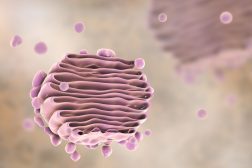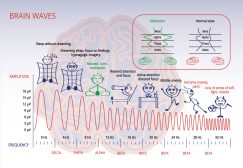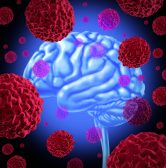Definition
noun
(cytogenetics) A chromosome banding method that treats chromosomes with quinacrine dihydrochloride to reveal fluorescent banding patterns in individual chromosome as viewed with fluorescence microscopy
Supplement
Banding techniques are used to reveal the characteristic pattern of light and dark bands on individual chromosome. They make use of diagrams referred to as chromosome ideograms to determine the relative sizes and the banding patterns of chromosomes. By applying specific stains, the banding patterns become apparent. The different types of banding methods are Giemsa (G-) banding, reverse (R-) banding, constitutive heterochromatin (C-) banding, quinacrine (Q-) banding, Nucleolar Organizer Region (NOR-) banding, and telomeric R (T-) banding.
Quinacrine banding (or Q-banding) is the first chromosome banding pattern reported. It is done by treating the chromosomes with quinacrine dihydrochloride. The resulting pattern is similar to the G-banding pattern in a way that the bright and dull regions produced along the chromosome correspond to the dark and light regions in G-banding patterns, respectively. This means that the brightly fluorescing regions implicate adenine- and thymine-rich regions. There are exceptions though. Characteristic Q-banding patterns are found at the distal long arm of the Y chromosome (which fluoresces extremely brightly), at the heterochromatic regions of chromosomes 1, 9, and 16, and at the satellite regions of the acrocentric chromosomes. Q-banding is very useful in the examination of the heteromorphism associated with the Y chromosome and the satellite regions of the acrocentric chromosomes as well as the characterization of structural abnormalities associated with Y chromosome material. 1
”Abbreviation / Acronym:
- Q-banding
- Q banding
See also:
Reference(s):
1 Burnett, D. & Crocker, J. (1998). The science of laboratory diagnosis. Oxford Dulles, Va: Isis Medical Media Distributed in USA by Books International.







